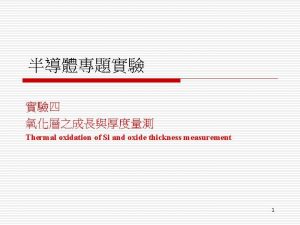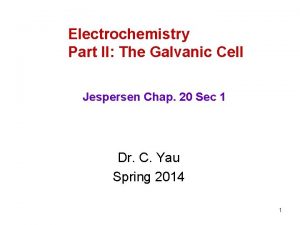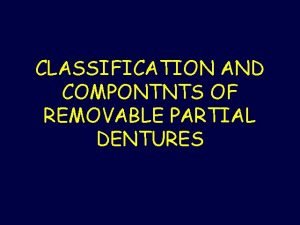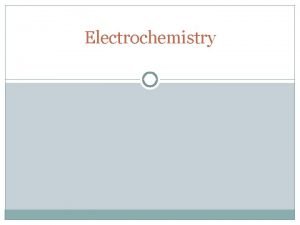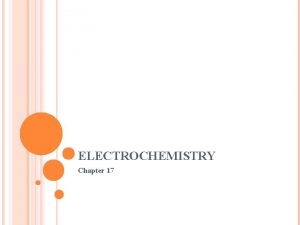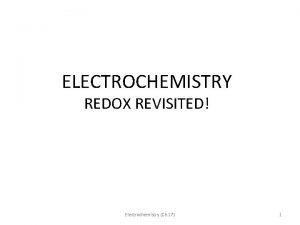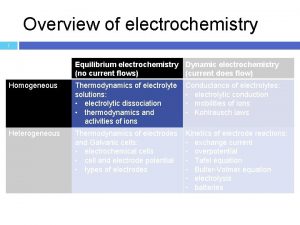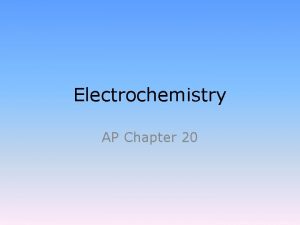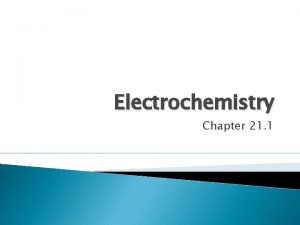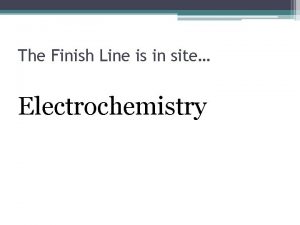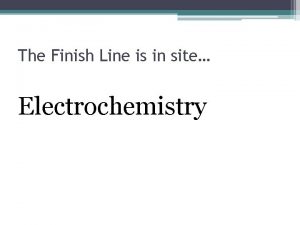The Finish Line is in site Electrochemistry Oxidation










- Slides: 10

The Finish Line is in site… Electrochemistry

Oxidation Numbers OBJECTIVES Determine the oxidation number of an atom of any element in a pure substance.

Oxidation Numbers OBJECTIVES Define oxidation and reduction in terms of a change in oxidation number, and identify atoms being oxidized or reduced in redox reactions.

Assigning Oxidation Numbers q An “oxidation number” is a positive or negative number assigned to an atom to indicate its degree of oxidation or reduction. q Generally, a bonded atom’s oxidation number is the charge it would have if the electrons in the bond were assigned to the atom of the more electronegative element

Rules for Assigning Oxidation Numbers 1) The oxidation number of any uncombined element is zero. 2) The oxidation number of a monatomic ion equals its charge.

Rules for Assigning Oxidation Numbers 3) The oxidation number of oxygen in compounds is -2, except in peroxides, such as H 2 O 2 where it is -1. 4) The oxidation number of hydrogen in compounds is +1, except in metal hydrides, like Na. H, where it is -1.

Rules for Assigning Oxidation Numbers 5) The sum of the oxidation numbers of the atoms in the compound must equal 0. 2(+1) + (-2) = 0 H O (+2) + 2(-2) + 2(+1) = 0 Ca O H

Rules for Assigning Oxidation Numbers 6) The sum of the oxidation numbers in the formula of a polyatomic ion is equal to its ionic charge. X + 3(-2) = -1 N O thus X = +5 X + 4(-2) = -2 S O thus X = +6

Reducing Agents and Oxidizing Agents q An increase in oxidation number = oxidation q A decrease in oxidation number = reduction Sodium is oxidized – it is the reducing agent Chlorine is reduced – it is the oxidizing agent

Trends in Oxidation and Reduction Active metals: Lose electrons easily Are easily oxidized Are strong reducing agents Active nonmetals: Gain electrons easily Are easily reduced Are strong oxidizing agents
 Deal-grove model
Deal-grove model Cell notation
Cell notation Hot site cold site warm site disaster recovery
Hot site cold site warm site disaster recovery External finish line rpd
External finish line rpd Internal finish line rpd
Internal finish line rpd The race for excellence has no finish line
The race for excellence has no finish line A plain scale of 1cm=5m and show on it 37m
A plain scale of 1cm=5m and show on it 37m Faraday's constant
Faraday's constant What is transport number in chemistry
What is transport number in chemistry Electrochemistry tutorial
Electrochemistry tutorial Ap chemistry chapter 18 electrochemistry test
Ap chemistry chapter 18 electrochemistry test
